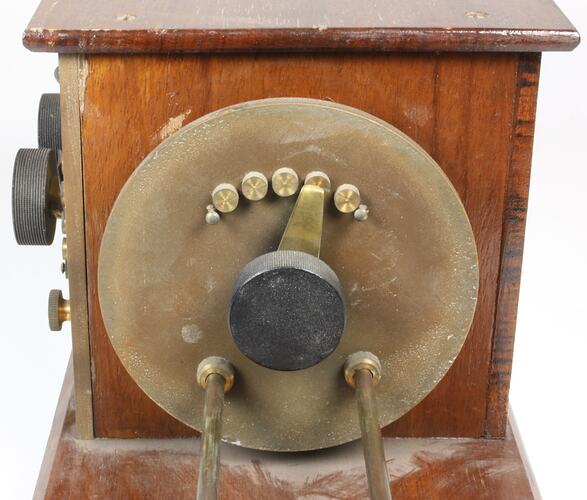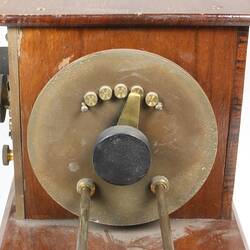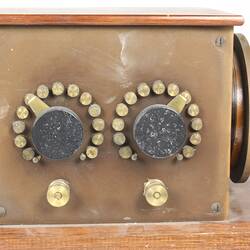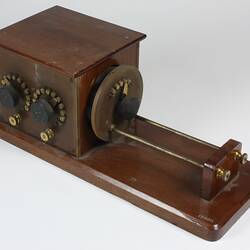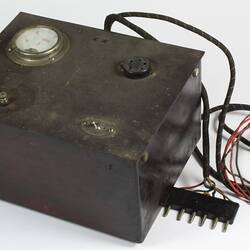Summary
Loose coupler or a receiving transformer, used in crystal sets, circa 1923. It has two separate tuning coils, a primary and a secondary, that are loosely coupled together. The term 'loose' refers to the fact the magnetic coupling between the coils is not particularly close. The secondary coil can slide in and out of the primary coil, and is connected to a detector. The primary coil is connected to an antenna and ground.
A crystal detector and tuning capacitor are connected to the two terminals at the end of the slide mechanism (the right end). An aerial and earth are connected to the two terminals on the box below the aerial coil tap selectors.
In order to receive a signal, the following adjustments must be made and possibly repeated to get the optimum performance (not a simple matter and easily upset):
The input coil (inside box) is adjusted to resonate at the desired receiving frequency using the two tap selectors on the front panel of the box.
The inductance of the secondary coil is set by its tapping switch and tuned by a capacitor (not present) to suit the frequency being received.
Moving the secondary coil in and out of the primary (in the box) allows coupling to adjusted for maximum performance. With coil pushed in, the sensitivity will be high and the selectivity will be poor. The reverse occurs with the coil pulled out.
Physical Description
Wooden base with wooden box at one end and a sliding coil on two rails allowing the coil to be slid in or out of the box. Brass controls and terminals and terminals on side of box. Moving coil has a brass control and there are terminals at the end of the slide.
More Information
-
Collecting Areas
-
Acquisition Information
Purchase
-
Date Manufactured
-
Inscriptions
None
-
Classification
-
Category
-
Discipline
-
Type of item
-
Overall Dimensions
350 mm (Length), 135 mm (Width), 140 mm (Height)
-
References
Sparkmuseum: Loose Couplers: accessed 21 September 2012: [Link 1]:
-
Keywords
